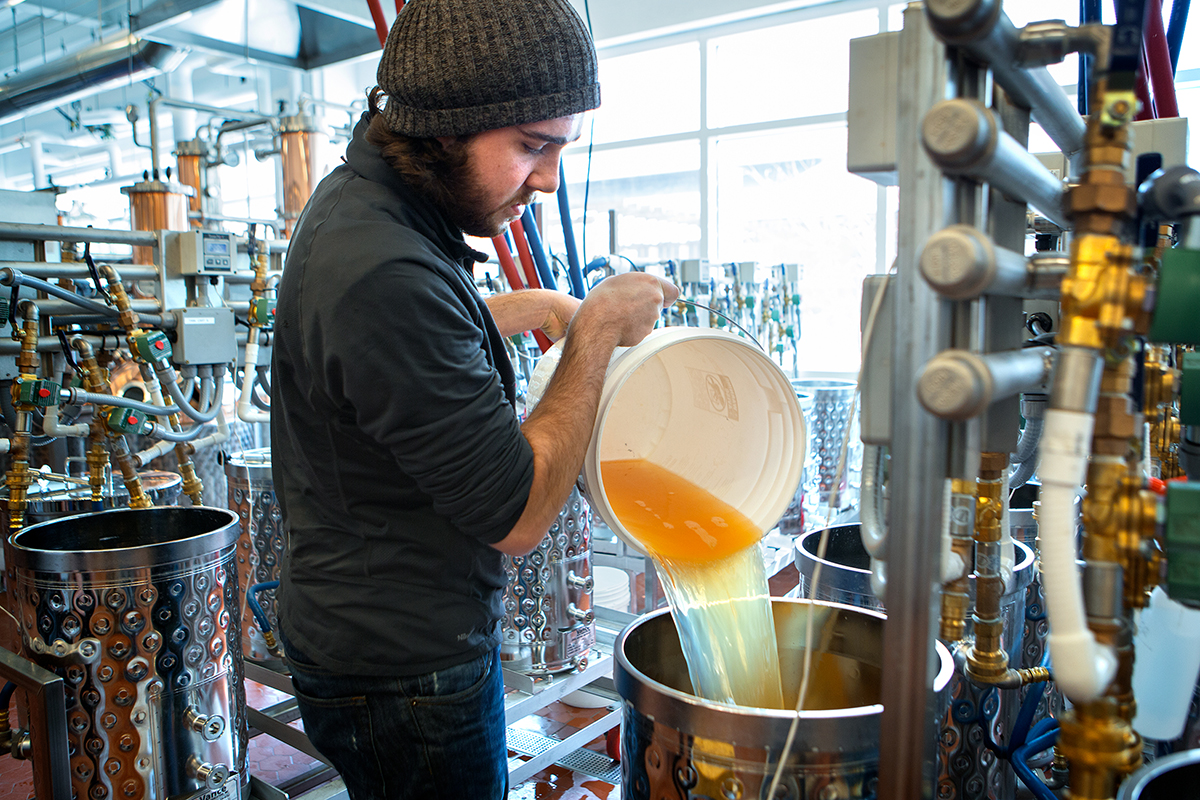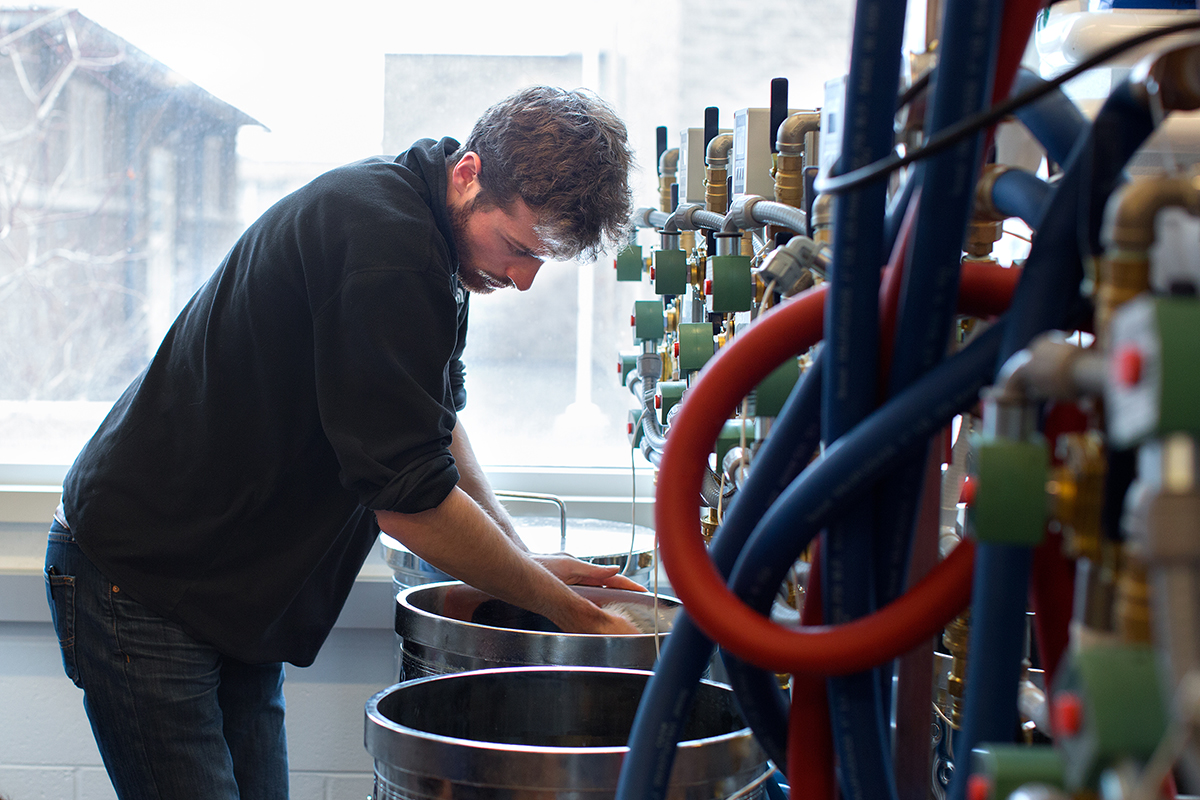Course teaches hard cider production, from fruit to fermentation
By Jennifer Savran Kelly

Long thought of as the sweet alternative to beer, hard cider is coming into its own.
Cider production in the United States has grown ninefold since 2010, blossoming into a $1.3 billion industry. With about 80 producers in New York – more than any other state in the nation – the regional economy is reaping the benefits of a fast-growing market ripe for experimentation.
“When you have such a huge growth spurt in an industry, suddenly there’s a lot of interest, and we have fantastic resources and expertise at Cornell to propel that interest into something tangible,” said Gregory Peck, assistant professor in the Horticulture Section of the School of Integrative Plant Science.
To prepare students to become leaders in the burgeoning cider industry, Peck and Kathleen Arnink, lecturer in the viticulture and enology program in the Department of Food Science, initiated the cider production lecture and laboratory course. The first of its kind in the country, the course in the College of Agriculture and Life Sciences teaches the full cycle of production, from growing apples to fermenting cider.
“Much of the science for hard cider is just getting started,” said Peck. “Before 2010 there was very little research into hard cider production, either the horticultural aspects of growing the fruit or making the cider itself.”
The cider production course features lectures by Peck and Arnink specific to their areas of expertise — for example, the difference between cider apples and culinary apples and procedures for harvesting, milling and pressing apples by Peck, and the chemistry and microbiology of cider fermentation by Arnink – as well as hands-on lab sessions in the Stocking Hall teaching winery.
Cider is often marketed and thought of like beer, but the process of making it is much closer to that of grape-based wines, Peck said. Like wine, cider is made by growing and harvesting fruit, then crushing and pressing it. The juice is poured into a vessel, yeast is added, and the juice is fermented so that the sugar is converted into alcohol and carbon dioxide.
But unlike wine, cider has often been ignored as a serious beverage.
“I believe the growth of ciders is partially due to millennials’ interest in trying new things without pre-judging them,” Arnink said. “When it comes to beverages, they’re willing to try many different kinds.”
The cider industry has been working to educate consumers about the diversity of varieties available. Producers and retailers are pairing them with foods, such as cheese and chocolate, the same way they would pair wines.
As part of the lecture classes, students taste a variety of ciders to experience differences in sweetness, acidity and bitterness.
“The big difference between culinary apples and specialized cider varieties is the polyphenol content, what we call tannins or bittering compounds,” said Peck, whose recent research has revealed orchard management practices that can produce more desirable hard cider. “For a hard cider, that’s what gives it mouthfeel and a more robust drinking experience.”
The course takes students on several field trips to commercial production facilities in upstate New York to see how small- and large-scale producers manage their operations.

Inside the teaching winery, lab students pair up to design their own fermentation projects. Choosing raw material from the Cornell orchards, they use various combinations of juices and techniques, such as adjusting for acid content, to create different flavor profiles.
And when it comes to making cider, anything goes.
Compared with wine producers, who lean toward conservative styles and varieties, cider producers are experimenting with all sorts of additives, from hops to cranberries to currants, playing with a wide range of flavors.
At the end of the seven-week lab, lecture students are invited to taste the results of their fellow students’ hands-on experimentation.
“The most exciting thing about working with the cider industry is that you can contribute so much so quickly,” Peck said. “I especially enjoy seeing students start to think about cider in a new way – as something more than a fizzy apple drink.”
Learn more at the Cornell Hard Cider Resources website.
Jennifer Savran Kelly is a writer for the College of Agriculture and Life Sciences.
Media Contact
Get Cornell news delivered right to your inbox.
Subscribe